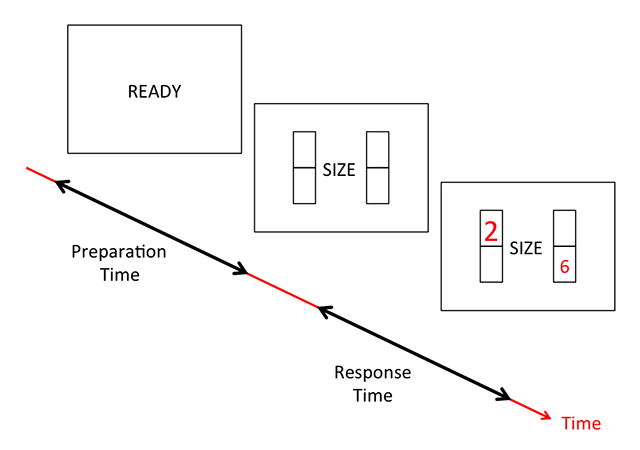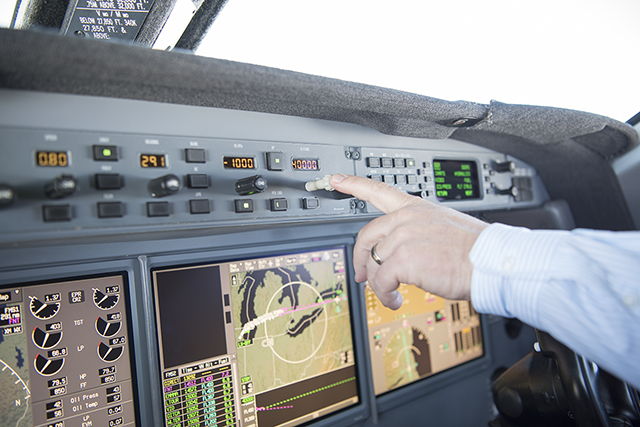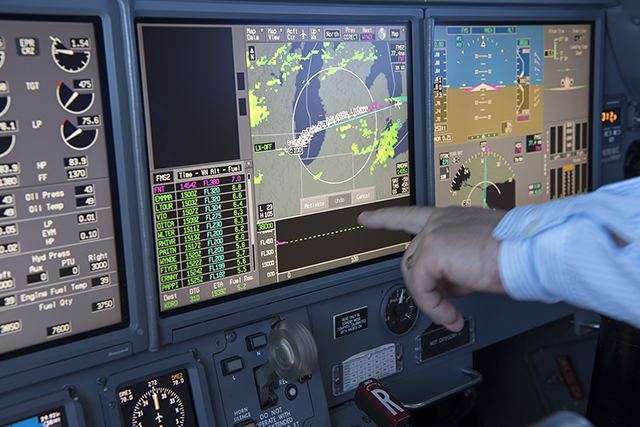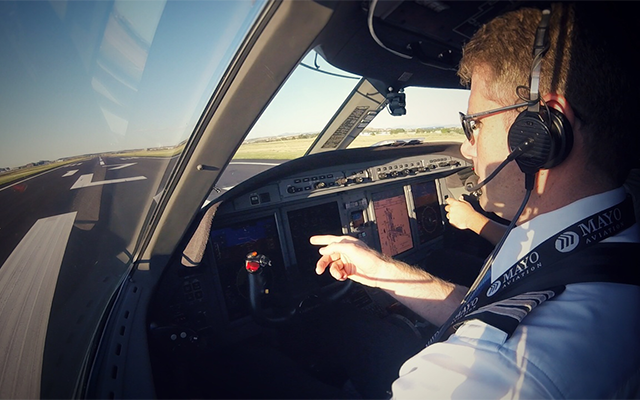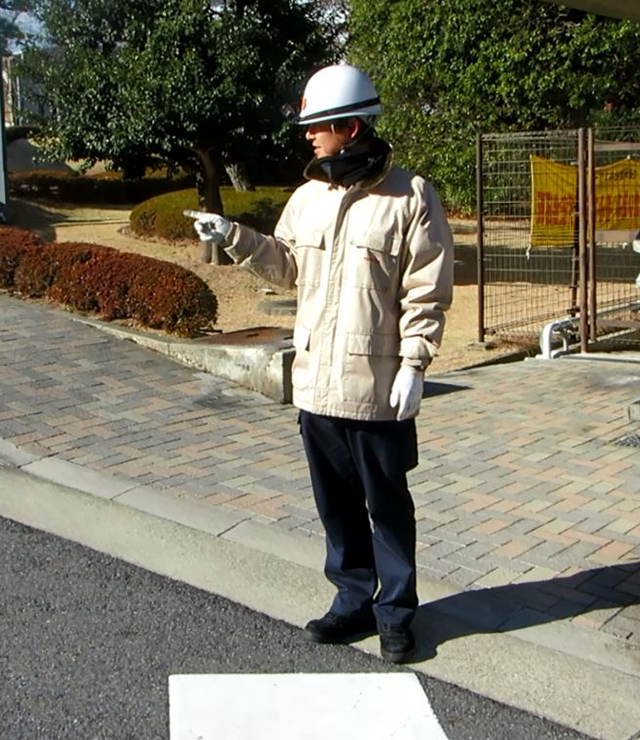We in the aviation world are quick to beg, borrow, and steal procedural innovations in the name of safety. When one operator innovates, other airlines and flight departments are quick to follow suit. Pilots are eager to share techniques, knowing one aviator’s idea can save lives worldwide. We are, to say the least, selfless in the pursuit of safer skies. But are we casting our nets wide enough to capture every good idea out there? The next time you board a train in Japan, you might notice a technique well suited for your cockpit. Known by various names, including “Shisa Kanko,” the Japan Railway standard procedure can be translated to mean: Pointing and Calling.
— James Albright

Updated:
2017-04-15
Why should we look at our Japanese rail-bound transportation partners when looking to improve airborne safety? Let the record speak for itself: there have been no fatalities or injuries onboard the Central Japan Railway Company System – The Shinkansen – since their operations began in 1964. They have carried over 10 billion passengers in that time, operating in densely populated cities, crisscrossing motor vehicle and passenger routes, in a country famously known for its earthquakes.
The Shinkansen’s many competitors in Japan also have enviable safety records but have been hard at work reducing their accident rates further, using a variety of techniques. The pointing and calling technique has been credited with reducing accident rates at these Japanese railway companies by 30 percent.
2 — The science behind pointing and calling

1
All aboard the Shinkansen
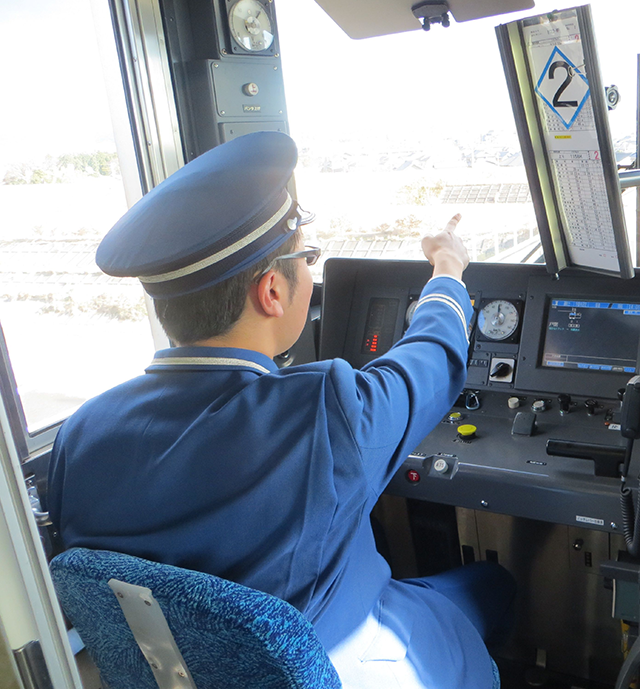
Aichi Loop Railway, Tokyo, Japan, Train Driver using “Shisa Kanko” Point and Call Procedure (Christoph Roser photo)
Many of the world’s top railways boast high-speed trains and the Shinkansen “Bullet Trains” are no exception; many have a top speed of 200 mph. But outside of Japan these high-speed trains have too often derailed when the train driver – often called the engineer – forgot to slow down in time to take a turn not rated for such speeds. In May of 2015, for example, an Amtrak Northeast Regional did just that near Philadelphia, PA, killing 8 and injuring 200. Later that year a Train à Grande Vitesse (TGV) derailed in Eckwersheim, Alsace, France for the same reason. In this case there was one death and 42 were injured. Perhaps we can empathize with the engineer’s plight: they must repeatedly read speed limit signs against a speedometer despite hours of monotony. It is a problem common to many vehicle operators, even airplane vehicle operators: how do you stay mentally sharp hour after hour? Perhaps we can borrow a technique from the Shinkansen.
The Pointing and Calling method combines looking at something, pointing at it, calling out the observation, and listening to your own voice. When approaching a typical speed limit, for example, the train driver points to the sign and says, “Limit 75, Distance 500,” and then points to his or her cockpit speedometer. Approaching a signal light, the driver points to the light and announces its status. In both examples, there is no one to hear or observe the engineer’s actions, they are meant to reinforce the information received and perceived to the engineer. But other Pointing and Calling episodes do have a broader audience.
When training, for example, it is much easier for the instructor to perceive the student’s thought process when each critical step is shown physically and announced. Coordination at each rail station is also made easier when the engineer and personnel on the station platform see and hear each other’s signals.
Proponents of the method claim the act of pointing promotes focus and attention, while the act of calling out the action reinforces correct procedure. Combined, the two steps help avoid sloppiness and complacency. The Railway Technical Research Institute of Japan conducted a test of the Pointing and Calling method in 1994. Their results showed work-related errors decreased to less than one-sixth. The pointing and calling method has a proven track record in the Japanese rail industry, but is there science behind the results?
2
The science behind pointing and calling
In 2011, the Osaka University set out to validate the method in a study with the impossibly long title, “The effects of ‘finger pointing and calling’ on cognitive control processes in the task-switching paradigm.” Their report notes that many modern work environments involve an enormous amount of information compiled by automated systems, all of which is funneled to a human being with relatively simple decisions to make. While these decisions can be thought to be simple enough – i.e., apply the brake in response to a speed limit sign – the cost of making a mistake can be catastrophic. These decisions can become much more stressful in a “task-switching paradigm,” that is when the decision is based on more than a true / false option. They anticipated that finger pointing and calling would improve accuracy, but they also believed it would slow down the process. (Proponents often argue that the method is especially important where accuracy is more important than speed.)
Researchers constructed an experiment where subjects were given a “ready” signal followed by two columns of boxes and an instruction cue. The cue was one of three choices: “digit,” “size,” or “position.” After a predetermined preparation time, two of the boxes would then be filled with different numbers, possibly of different font sizes. If cued with “digit,” the subject would respond with the larger of the two given numbers. If cued with “size,” the correct response would be which number was displayed in a larger font. And finally, if cued with “position,” the answer would be the number that was physically higher.
Participants were tested during 90 trials where the provided cue would be consistent. They would, for example, always be cued with “digit” and simply had to respond with the larger number. They each ran a set of trials with and without Pointing and Calling.
Participants were then tested during 120 trials where each event had an uncertain cue. They would, for example, be presented with a new board of two numbers and one of the three possible cues. This would greatly complicate the decision-making. Here again they each ran a set of trials with and without Pointing and Calling.
Of 8,000 trials, the overall error rate was very low, just 2.5 percent. But when finger pointing and calling was required, errors virtually disappeared. While this was expected, the impact on reaction time was not. When required to not only interpret two numbers but also the required cue, reaction time improved with and without Pointing and Calling, but more so with the technique than without.
The Osaka University study concludes that the Pointing and Calling technique facilitates the cognitive process, working memory, and the subsequent response. In other words, Pointing and Calling improves your accuracy when having to evaluate information prior to making distinct decisions based on that information.
The Pointing and Calling technique has made a demonstrable impact on the Japanese railway industry safety record. It has been scientifically proven to reduce error rates, improve memory performance, and in some cases to increase the speed at which accurate decisions are made. It is a technique that would seem tailor-made for a modern aircraft cockpit.
3
An aviator’s pointing and calling primer
Many flight crews already use a variation of the Pointing and Calling technique for some repetitive tasks where accuracy is more important than speed. For example, pointing to the altitude selector after receiving instructions to climb or descend, and then verbalizing the instruction, is a widely-accepted practice among most professional flight crews.
Altitude Changes
As of this writing, there have been 342 recorded midair collisions of airplanes, according to the Aviation Safety Database of the Flight Safety Foundation. Misheard clearances and miss-set altitude selectors continue to plague pilots, according to the Aviation Safety Reporting System (ASRS). While the number of reports of an altitude overshoot or undershoot resulting in an air traffic controller’s correction fell from a high of 276 in 2000 to a low of 20 reports in 2013, the years since have shown a rebound to as high as 61 in 2015. This is a problem that still bedevils us.
Many pilots long ago adopted an altitude change technique whereby the pilot monitoring (PM) dials in a newly assigned altitude into a flight director and leaves his or hand on the altitude selector until the pilot flying (PF) acknowledges. But there are repeated instances where this method has failed. The PM may have dialed in the wrong altitude and the PF didn’t notice. The PM may have gotten busy and removed the reminder hand. Or the PF may have misheard the instruction or forgot to follow through by making the appropriate autopilot inputs. No matter the cause, the technique occasionally fails.
We can improve on our less than perfect technique by doubling up on the Pointing and Calling in a two-pilot cockpit:
- The PM acknowledges the altitude assignment on the radio while dialing in the new altitude (the “point”). While leaving a finger on the altitude selector is desirable, there are times when the PM has other immediate tasks.
- The PM then announces the new altitude cross-cockpit (the “call”). Repeating the altitude between pilots reinforces the correct altitude in the PM’s mind.
- The PF points to the primary flight display if that shows the primary flight guidance altitude, or to the altitude selector if that is primary to the avionics installation (the “point”). In some aircraft, the altitude selector may not accurately reflect the commanded altitude during metric altitude operations, for example.
- The PF verbalizes the new altitude assignment (the “call”). While having the PF also announce the altitude can seem to be more cockpit chatter than many crews would like, it gives both pilots another chance to mentally assimilate the instruction. It could, for example, cue the PM that something “isn’t right.”
Even a pilot flying without a copilot can benefit from the technique, much as the engineer on the Shinkansen reduces error rates with the technique. After the single pilot acknowledges the new altitude assignment, pointing to the applicable instrument and verbalizing the change can help the pilot detect a self-initiated error.
Course Changes
You might think pilots flying on an Instrument Flight Rules (IFR) flight plan pay greater attention to detail and the need to navigate precisely. While this might be true, these instrument-rated pilots are still capable of critical mistakes. The ASRS database shows over 1,100 incidents in the last ten years where air traffic control had to issue an alert to IFR aircraft deviating from track or heading. Pilots can often find themselves heading in the wrong direction after mishearing a clearance, mishandling navigation computers, or making an automation error. Even a two-pilot crew is vulnerable, as one pilot can assume the other pilot is on top of the game and fails to catch any errors. Pointing and calling enhances crew resource management by stimulating extra senses cross cockpit.
When making an FMS entry, for example, the pilot should announce the actions taken. “We are now going direct to a new point, JFK, which I have inserted before Hartford,” for example. If the navigation software allows a preview of the changes on the FMS or display units, both pilots can confirm the results are correct. But even without this preview, both pilots should point to the resulting course changes to confirm their validity.
Pointing and calling out these changes gives both pilots added chances to catch errors that may have gone unnoticed by simply looking at the results. The verbal and tactile senses will enhance the visual. Many crews will consider these to be unnecessary because “we almost never make these errors.” An honest self-assessment will have to admit the error rate is “almost” never, and that should be motivation enough to add the pointing and calling technique.
Taxi Instructions and the Taxi Route
We practice most of our flight maneuvers repeatedly and tend to be in our comfort zones from takeoff to landing. Unfamiliar Standard Instrument Departures (SIDs) or Standard Terminal Arrival Routes (STARs) can be studied beforehand and even flown expertly by modern avionics. Some avionics suites have converted many non-precision approaches into Continuous Descent Final Approaches (CDFA) that mimic a plain, vanilla Instrument Landing System (ILS) approach. Flying, in many respects, has become easy. But you must get off the ground first. At some airports, the biggest challenge facing a crew is getting from the gate to the runway.
There have been nearly 2,200 taxi incidents reported to ASRS; events that required ATC intervention to prevent a runway incursion or other taxi routing mistake. Many modern aircraft provide an Electronic Flight Bag Class 3 capability to show an aircraft’s position on an airfield diagram, greatly enhancing a pilot’s situational awareness. But even with this technological innovation, the pilot must still translate controller instructions into a route with very little time to become really situationally aware. Pointing and calling can give a pilot an extra tool to prevent taxi mistakes.
When issued a taxi instruction, the best course of action may be to write it down. With or without this step, the next step should be to trace the route on the taxi diagram with your finger while repeating the instruction. This will help cement the directions into your memory. But the pointing and calling doesn’t end there.
Have you ever sat in the right seat, trying to pay attention just prior to an action point (a turn or a hold short restriction)? While you trust the pilot wants to comply with the taxi instructions, you aren’t certain he or she understood them as you did. There are times the pilot driving the aircraft can place the aircraft into harm’s way before you can react quickly enough. Pointing and calling gives both pilots a chance to avoid the mistake before it threatens your license (at the least) or aircraft (at the worst).
If you adopt the habit of pointing to an action point before you get to it, you can double your chances that both pilots will have had a chance to verify the action agrees with the clearance. Before making a turn onto an adjoining taxiway, for example, the pilot steering the aircraft points to the sign and announces the action. “I see taxiway alpha,” the pilot says while pointing to the “A” sign, “I will be turning left.” The other pilot points to the same sign, “I see alpha, it is a left turn.”
Runway Entry
The same problem and consequences of mistaking taxi instructions are present for runway entries, only more so! These problems are made more complicated by new technology and procedures. The Takeoff Hold Lights (THLs), Runway Entrance Lights (RELs), and Final Approach Runway Occupancy Signals (FAROSs) found at some Runway Status Light System (RWSL) airports, such as Dallas-Fort Worth International Airport (KDFW) have introduced a new layer of complexity. Have you ever heard, “Behind the Airbus on final, line up behind” while waiting for takeoff clearance? These conditional clearances found at some international locations can further confuse two pilots still thinking “cleared into position and hold” is a better idea.
Here again, pointing and calling, can help pilots detect mistakes before they become dangerous. In 2006, a Comair Canadair Regional Jet intended to takeoff from Runway 22 at Lexington-Blue Grass Airport, Kentucky (KLEX), but mistakenly used the much shorter Runway 26. The taxi route had been recently changed and it was dark. Even after one pilot commented on the fact the runway was unlit, the crew commenced the takeoff roll but were unable to takeoff because the runway was far too short. All but one of the 50 persons on board were killed.
A best practices technique would be to have the pilot in control of the aircraft point to a runway sign, announce the intended action, and callout the correct runway heading once in position. The other pilot verifies each action. At Lexington, for example, the pilot would look for the correct runway sign or number on the pavement. “We are cleared to takeoff on Runway 22,” pointing to the sign. “I also see Runway 22,” the other pilot would confirm. Once aligned with the runway, both pilots point to their heading systems and verify, “Runway heading 226 verified.”
These extra steps may seem to be a nuisance, especially at a familiar airport. But consistent repetition contributes to habit, and that habit can be a life saver.
4
More. But not too much!
There is no doubt we in the business of flying airplanes can learn from our peers driving the Shinkansen. But just as some Japanese companies can take a good thing too far, so must we be wary of pushing the technique to the point where it becomes burdensome. Some Japanese companies, for example, require their employees to look and point before crossing the road. But an observation of the Toyota Headquarters revealed fewer than 5 percent of its employees followed this rule. As with many rules in life, once you start to ignore one, the others become easier to disregard as well.
At the very least, we should consider the Shisa Kanko Pointing and Calling techniques for altitude changes, taxi procedures, and runway entries. The Shinkansen’s zero-point-zero accident rate is worth striving for, their Shisa Kanko technique may help us get there.
References
(Source material)
Roser, Christoph, "Faster, Better, Cheaper" in the History of Manufacturing, CRC Press, Taylor & Francis Group, London, 2017.
Roser, Christoph, http://www.allaboutlean.com/pointing-and-calling/
Shinohara, Kazumitsu; Naito, Hiroshi; Matsui, Yuko; Hikono, Masaru, The effects of "finger pointing and calling" on cognitive control processes in the task-switching paradigm, International Journal of Industrial Ergonomics 43 (2013) 129-136.

